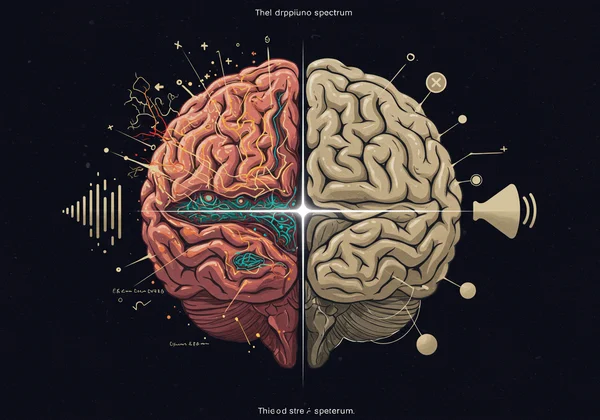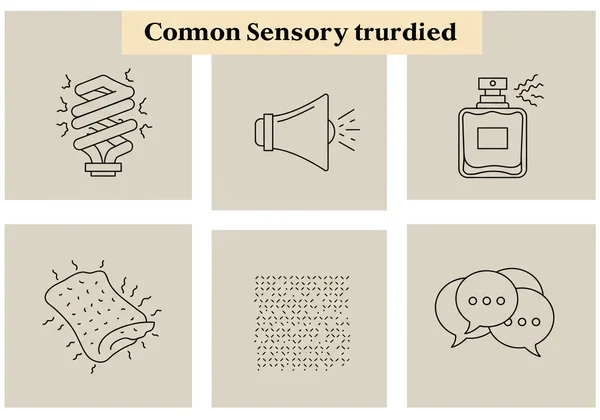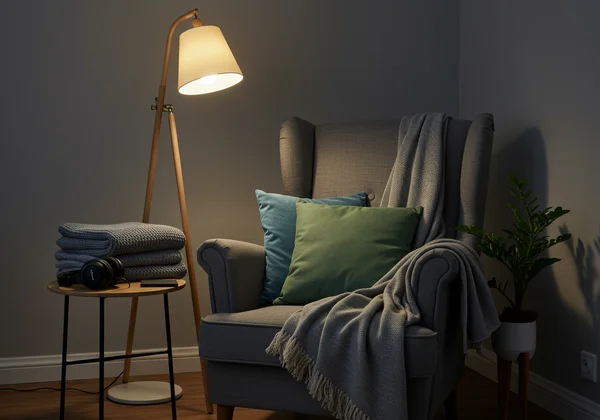Compreender a Sobrecarga Sensorial Autista e Faça o Seu Questionário sobre Autismo
Você já sentiu como se o mundo estivesse no volume máximo? O zumbido de uma geladeira soa como um motor a jato, as etiquetas das suas roupas parecem lixa, e as luzes fortes de um supermercado deixam você tonto e exausto. Se isso lhe parece familiar, você não está sozinho. Essa experiência é frequentemente uma parte central da sobrecarga sensorial autista. Para muitos, o primeiro passo para entender esses sentimentos é perguntar: "Como posso saber se sou autista?". Este artigo explorará o que é a sobrecarga sensorial, por que ela acontece em indivíduos autistas e fornecerá estratégias práticas para ajudar você a navegar em um mundo que muitas vezes pode parecer demais. Compreender as suas necessidades sensoriais é um passo poderoso na jornada de autodescoberta, uma jornada que você pode começar a explorar com um questionário de autismo.
Decifrando as Questões Sensoriais no Autismo: Hipersensibilidade e Hiposensibilidade
No cerne da sobrecarga sensorial estão as diferenças na forma como o cérebro processa a informação sensorial. Para pessoas autistas, isso não se trata de ser "muito sensível" no sentido emocional; é uma realidade neurológica. Essas diferenças geralmente se enquadram em duas categorias: hipersensibilidade e hiposensibilidade.
- Hipersensibilidade (sensibilidade aumentada): É quando a entrada sensorial parece amplificada. Um toque suave pode parecer doloroso, uma conversa normal pode soar ensurdecedora, ou uma textura alimentar específica pode ser insuportável. Este é o estado que mais frequentemente leva diretamente à sobrecarga sensorial.
- Hiposensibilidade (sensibilidade diminuída): É o oposto, onde um indivíduo pode necessitar de uma entrada sensorial mais intensa para registrá-la. Isso pode manifestar-se como uma alta tolerância à dor, uma necessidade de sabores fortes, ou gostar de música alta e abraços apertados. Uma pessoa pode ser hipersensível a alguns estímulos (como o som) e hipossensível a outros (como o toque).
Compreender essa dualidade é crucial. Ela explica por que uma pessoa autista pode cobrir os ouvidos numa festa, mas procurar a pressão intensa de um cobertor pesado. Não é uma contradição; é um perfil sensorial único.

O que é Sensibilidade Sensorial? Para Além do 'Excesso de Ruído'
Quando falamos de sensibilidade sensorial, estamos nos referindo ao limiar no qual o sistema nervoso de uma pessoa responde a estímulos. Para muitas pessoas autistas, esse limiar é significativamente mais baixo para certos sentidos. Isso não se limita aos cinco sentidos tradicionais (visão, audição, tato, paladar, olfato). Inclui também:
- Sentido vestibular: O nosso sentido de equilíbrio e orientação espacial.
- Propriocepção: A nossa consciência da posição do nosso corpo no espaço.
- Interocepção: A nossa capacidade de perceber sinais corporais internos, como fome ou a necessidade de usar o banheiro.
Uma sensibilidade aumentada significa que o cérebro está constantemente a processar uma quantidade avassaladora de informações do ambiente e do corpo, o que pode ser incrivelmente desgastante.
Gatilhos Sensoriais Comuns: Identificando os Seus Estressores Ambientais Pessoais
Identificar os seus gatilhos sensoriais específicos é um passo fundamental para os gerir. Embora o perfil de cada pessoa seja diferente, alguns gatilhos comuns para indivíduos autistas incluem:
- Auditivos: Zumbido de luzes fluorescentes, relógios a tique-taque, várias conversas ao mesmo tempo, ruídos altos ou repentinos.
- Visuais: Luzes brilhantes ou cintilantes, ambientes desorganizados, padrões complexos, luz solar direta. Isso é frequentemente descrito como sensibilidade à luz em pessoas autistas.
- Táteis: Etiquetas de roupa que picam, certos tecidos (como lã), toques inesperados ou texturas alimentares específicas.
- Olfativos (Cheiro): Perfumes fortes, produtos de limpeza ou cheiros de cozinha.
- Gustativos (Sabor): Sabores intensos ou mistos, texturas alimentares específicas.
Manter um pequeno diário durante uma semana para anotar quando se sente sobrecarregado pode ajudar a identificar os gatilhos específicos na sua vida diária.

Como a Sobrecarga Sensorial Autista Afeta a Vida Diária
A sobrecarga sensorial não é apenas um desconforto momentâneo; é uma experiência profundamente impactante que pode afetar todos os aspetos da vida. Pode tornar tarefas aparentemente simples, como ir à loja, participar de um evento social ou até trabalhar num escritório, em desafios monumentais. O constante bombardeamento de informações sensoriais pode levar à ansiedade, irritabilidade e a uma necessidade desesperada de escapar da situação. Muitas pessoas autistas desenvolvem mecanismos de enfrentamento, como usar fones de ouvido ou óculos de sol em ambientes fechados, o que às vezes pode ser mal interpretado por outras pessoas.
Do Desconforto à Exaustão: O Efeito Cumulativo da Entrada Sensorial
Um dos aspetos mais desafiadores da sobrecarga sensorial é o seu efeito cumulativo. É como um balde a encher de água, gota a gota. Cada entrada sensorial — o ecrã brilhante, o perfume do colega, o zumbido do ar condicionado — é mais uma gota. Eventualmente, o balde transborda. Este transbordo pode manifestar-se como um episódio de sobrecarga (uma expressão intensa e externa de angústia) ou um fechamento (um retraimento interno do mundo). Esta drenagem constante de recursos mentais e emocionais é um fator primordial para o esgotamento autista, um estado de profunda exaustão. Reconhecer os seus limites sensoriais é fundamental para prevenir este esgotamento e preservar a sua energia.

Reconhecer o Seu Perfil Sensorial Único: Um Passo para o Autoconhecimento
As suas experiências sensoriais são exclusivamente suas. O que sobrecarrega uma pessoa pode ser calmante para outra. A jornada para gerir a sobrecarga sensorial começa por compreender profundamente o seu perfil sensorial. É mais sensível a sons ou texturas? Procura pressão profunda ou evita o toque leve? Responder a estas perguntas fornece-lhe um roteiro pessoal para criar uma vida mais confortável. Este processo de autoexploração é poderoso. Para muitos, dar um passo inicial como um questionário online sobre autismo pode oferecer insights estruturados sobre estas mesmas características, ajudando a conectar os pontos entre as suas experiências e um potencial neurotipo.
Estratégias Práticas para Gerir Questões Sensoriais no Autismo
Assim que começar a compreender o seu perfil sensorial, pode começar a implementar estratégias para gerir as questões sensoriais. O objetivo não é eliminar toda a entrada sensorial, mas regulá-la para um nível que seja gerenciável e seguro para si. Isso envolve uma combinação de modificação do seu ambiente e desenvolvimento de habilidades internas de enfrentamento.
Criar Ambientes Sensoriais Amigáveis: Mudanças Simples, Grande Impacto
Você tem mais poder sobre o seu ambiente do que imagina. Ao fazer pequenos ajustes, pode reduzir significativamente a carga sensorial. Considere estas ideias para criar espaços sensoriais amigáveis:
-
Em Casa: Use reguladores de intensidade de luz ou candeeiros em vez de iluminação superior forte. Adicione tapetes para abafar ecos. Designe um "canto tranquilo" com cobertores e almofadas macias onde possa descontrair.
-
No Trabalho/Escola: Se possível, peça uma secretária numa área mais tranquila. Use auscultadores com cancelamento de ruído de alta qualidade. Use óculos com filtro de luz azul para reduzir o brilho do ecrã.
-
Em Movimento: Leve sempre um "kit sensorial". Isso pode incluir óculos de sol, um brinquedo de fidget, tampões para os ouvidos ou auscultadores, e um aroma reconfortante como óleo de lavanda num pano.

Desenvolver Habilidades Internas de Enfrentamento: Autorregulação e Técnicas de Aterramento
Você nem sempre consegue controlar o seu ambiente, mas pode desenvolver habilidades internas de enfrentamento para o ajudar a manter-se centrado quando se sente sobrecarregado.
- Stimming: Movimentos repetitivos como balançar, agitar as mãos ou mexer-se são ferramentas naturais de autorregulação. Permita-se fazer stimming livremente quando precisar; é a forma do seu cérebro gerir a entrada.
- Técnicas de Aterramento: O método 5-4-3-2-1 pode ser muito eficaz. Nomeie 5 coisas que pode ver, 4 coisas que pode sentir, 3 coisas que pode ouvir, 2 coisas que pode cheirar e 1 coisa que pode provar. Isso desvia o seu foco do estímulo avassalador.
- Respiração Consciente: Focar-se em respirações lentas e profundas pode acalmar o seu sistema nervoso em momentos de pânico crescente.
Comunicar as Suas Necessidades: Advogar por Si
Uma das habilidades mais empoderadoras que pode desenvolver é comunicar as suas necessidades aos outros. Pode ser difícil, mas é essencial para construir relações e ambientes de apoio.
- Seja Direto e Simples: Pode dizer: "A música está um pouco alta para mim, podemos baixar o volume?" ou "Preciso de alguns minutos de silêncio sozinho para recarregar."
- Eduque os Seus Entes Queridos: Explique a amigos próximos e familiares como a sobrecarga sensorial se sente para si. Isso ajuda-os a compreender que as suas necessidades não são uma preferência, mas uma necessidade.
- Defina Limites: Não há problema em sair de uma festa mais cedo ou recusar um convite para um lugar que sabe que será avassalador. Proteger a sua energia não é rude; é autocuidado. Aprender mais sobre as suas características pode dar-lhe a confiança para definir esses limites. Muitos descobrem que um primeiro passo é explorar as suas características com uma ferramenta online confidencial.
Abraçar o Seu Mundo Sensorial: Um Caminho para Mais Bem-Estar
Viver com sensibilidade sensorial aumentada num mundo não construído para si é desafiador, mas não é um défice. A sua maneira única de experienciar o mundo também pode ser uma fonte de grande alegria — notar detalhes intrincados que outros perdem, sentir a música profundamente ou encontrar conforto profundo em texturas específicas. A chave não é lutar contra o seu sistema sensorial, mas compreendê-lo e trabalhar com ele.
Ao identificar os seus gatilhos, modificar o seu ambiente e defender as suas necessidades, pode passar de um estado de constante sobrecarga para um de maior equilíbrio e bem-estar. Esta jornada de autoconhecimento é contínua e profundamente pessoal. Se o que leu hoje ressoa consigo, pode ser um sinal para explorar mais a fundo.
Pronto para dar o próximo passo na compreensão do seu perfil único? Comece o seu questionário de autismo hoje para fazer o nosso questionário gratuito e cientificamente validado. É um primeiro passo confidencial e perspicaz para abraçar o seu neurotipo e viver uma vida mais autêntica.
Perguntas Frequentes sobre Experiências Sensoriais no Autismo
Quais são as dificuldades sensoriais mais comuns para adultos autistas?
Embora as experiências variem amplamente, as dificuldades comuns para adultos autistas frequentemente incluem hipersensibilidade a sons (misofonia), luzes brilhantes ou fluorescentes e texturas ou etiquetas de roupas específicas. Muitos também lutam com a interocepção (dificuldade em identificar fome ou fadiga) e podem sentir-se facilmente sobrecarregados em ambientes lotados ou caóticos, como supermercados ou transportes públicos.
Uma alta sensibilidade à luz pode indicar autismo?
A alta sensibilidade à luz, por si só, não significa automaticamente que alguém é autista. No entanto, a sensibilidade à luz em pessoas autistas é uma característica muito comum entre indivíduos autistas. Se você acha que luzes brilhantes são consistentemente distrativas, dolorosas ou desgastantes, e isso ocorre em conjunto com outras características como desafios sociais, interesses intensos ou a necessidade de rotina, isso pode fazer parte de um perfil autista mais amplo.
Existe um questionário online para me ajudar a entender o meu perfil sensorial?
Sim, os questionários online podem ser um ótimo ponto de partida para a autoexploração. Embora não sejam ferramentas de diagnóstico, um teste bem elaborado pode fornecer informações valiosas sobre as suas características, incluindo sensibilidades sensoriais. Os questionários nesta plataforma são baseados em ferramentas de triagem estabelecidas como o CAT-Q e são concebidos para o ajudar a refletir sobre as suas experiências de forma estruturada. Pode fazer o questionário aqui para obter um relatório personalizado.
Como as questões sensoriais se relacionam com o esgotamento autista?
As questões sensoriais são um grande contribuinte para o esgotamento autista. Navegar constantemente num mundo que agride os seus sentidos requer uma quantidade imensa de energia. Com o tempo, este stress crónico esgota os seus recursos mentais, emocionais e físicos, levando a um estado de profunda exaustão onde até as tarefas básicas parecem impossíveis. Aprender a gerir a entrada sensorial é uma das estratégias mais eficazes para prevenir e recuperar do esgotamento autista.